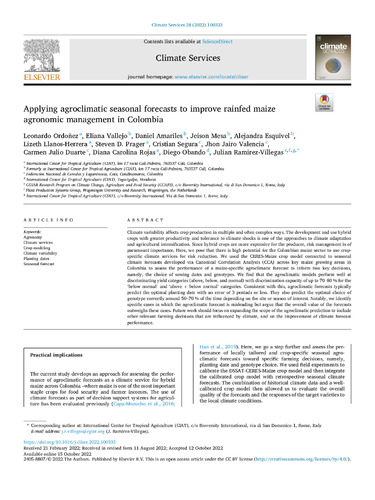Applying agroclimatic seasonal forecasts to improve rainfed maize agronomic management in Colombia
Climate variability affects crop production in multiple and often complex ways. The development and use hybrid crops with greater productivity and tolerance to climate shocks is one of the approaches to climate adaptation and agricultural intensification. Since hybrid crops are more expensive for the producer, risk management is of paramount importance. Here, we pose that there is high potential for the Colombian maize sector to use crop-specific climate services for risk reduction. We used the CERES-Maize crop model connected to seasonal climate forecasts developed via Canonical Correlation Analysis (CCA) across key maize growing areas in Colombia to assess the performance of a maize-specific agroclimatic forecast to inform two key decisions, namely, the choice of sowing dates and genotypes. We find that the agroclimatic models perform well at discriminating yield categories (above, below, and normal) with discrimination capacity of up to 70–80 % for the ‘below normal’ and ‘above + below normal’ categories. Consistent with this, agroclimatic forecasts typically predict the optimal planting date with an error of 3 pentads or less. They also predict the optimal choice of genotype correctly around 50–70 % of the time depending on the site or season of interest. Notably, we identify specific cases in which the agroclimatic forecast is misleading but argue that the overall value of the forecasts outweighs these cases. Future work should focus on expanding the scope of the agroclimatic prediction to include other relevant farming decisions that are influenced by climate, and on the improvement of climate forecast performance.

